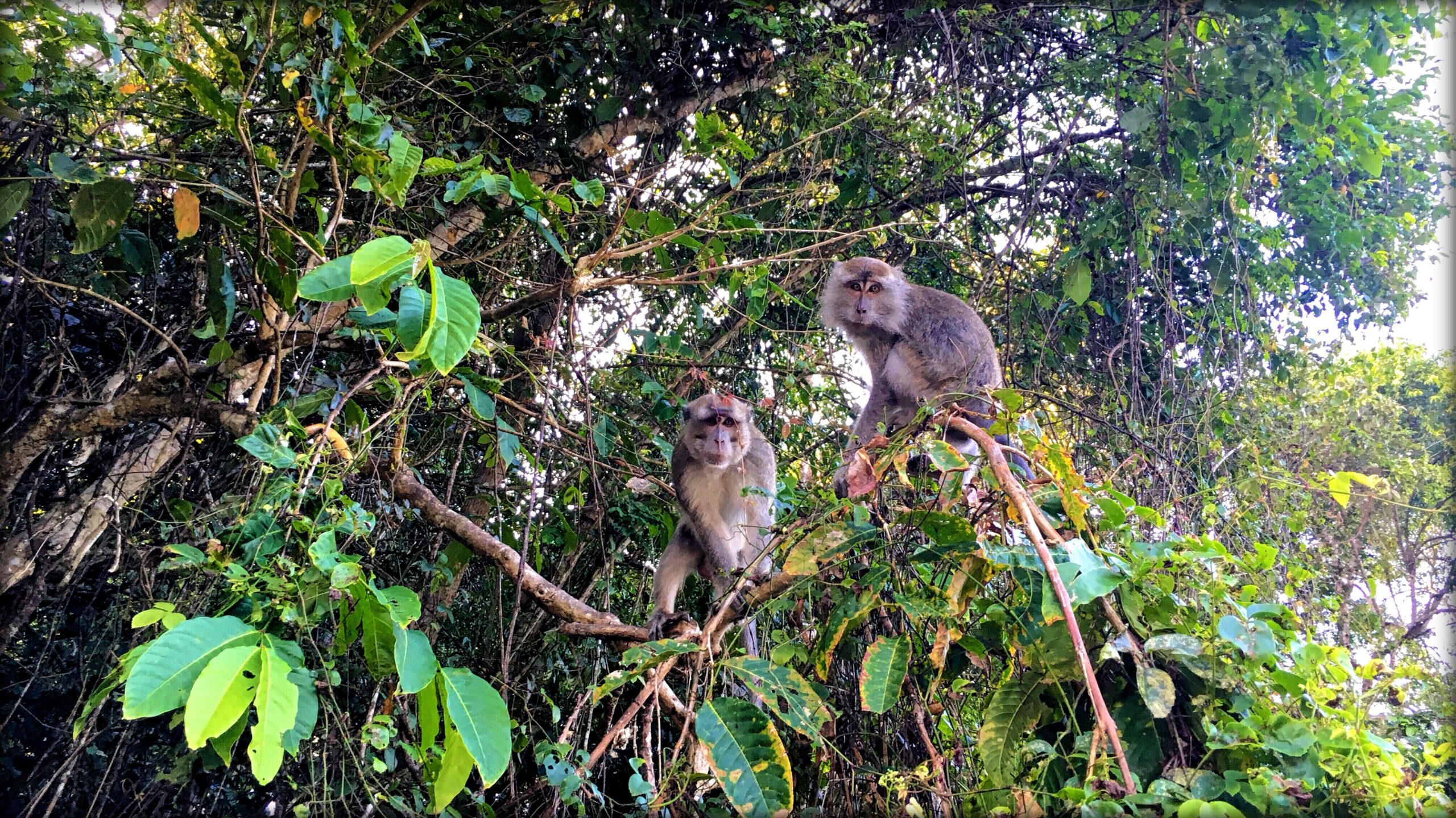Pardon Us – Kinabatangan River – Sabah, Malaysian Borneo

Borneo is home to over 210 mammals, 44 of which are endemic (meaning they’re not found anywhere else in the world), 420 species of birds, 100 different types of amphibians, 394 different types of fish, and 15,000 plant species, of which 5,000 are endemic. This makes Borneo one of the most biologically diverse habitats on Earth. The nature and wildlife is what drew us here, so we continued our mission to see as much of it as possible.
On the flight into Sandakan, the most prominent visible feature was Malaysia’s second longest river, the Kinabatangan. It looked like a massive snake, clearing a path through the forest as it slithered through the landscape. Like the rest of Borneo, the northern parts of the river and its surrounding forests have felt the effects of the extensive, and often illegal, logging and deforestation. Fortunately, the forests and swamps in the coastal areas have survived, and a contain some of Borneo’s highest concentrations of wildlife. So of course we had to check it out for ourselves!
There’s no guarantee of seeing wildlife here on any given day, but there are ways of increasing your odds. The best option is to stay in one of the eco lodges along the river that operate wildlife-spotting cruises up and down the river at dusk and dawn. The more outings you take, the more likely it is that you might catch a glimpse of a pygmy elephant or orangutan, two of the more illusive inhabitants of the forest. Our trip here is a short one, so we opted for a half day excursion that got us out into the rainforest to partake in a two hour dusk cruise. Getting there required a two hour ride in a minivan over bumpy roads each way, but it was worth it.
Unfortunately we didn’t spot any Pygmy elephants, no matter how many positive thoughts and vibes Christine put out there, but we did get to see lots of wildlife! There were tons of monkies, birds, and even a crocodile taking a nap along the river. We spotted numerous groups of long tailed macaques playing in the trees. These monkeys seemed to be just as curious about us as we were of them. A few of the babies would make their way over to branches that hung just above or next to the boat. They’d cover themselves with leaves and just watch us. We had a close encounter, almost too close, with the two macaques in the picture. They were perched on a branch that dangled over the river. Our boat pulled up to the shore so we could watch them, but we drifted a little too close, and the branch ended up right over our heads. We cautiously looked up at them, as they looked down at us – neither of us were sure what to do. Thankfully the boat quickly backed up.
We also saw groups of proboscis monkeys, the long-nosed, big-bellied monkey that is native to Borneo. We stopped off a few times to watch them as they jumped from tree to tree, watching us from above.
The highlight of the trip was seeing the man of the forest, a large male orangutan. It was a Bigfoot-style sighting – no time to even think about taking a picture – but it was amazing. There was some movement high in the trees, then the sound of branches breaking, and then all of a sudden, about 15 feet in front of us in clearing on the side of the river, he emerged. It was a small clearing, so he disappeared into the forest just as quickly as he arrived. Our reaction when we saw him was “holy shit” – he was huge, and he was sporting a big orange beard!
We headed back to the city well after dark. As we were leaving the river, we looked up at the sky and saw an endless amount of stars. It was some of the clearest sky we’ve ever seen. We wish we could make more time to stay out in the rainforest and properly enjoy nature at its finest, but our next flight is on the horizon.
